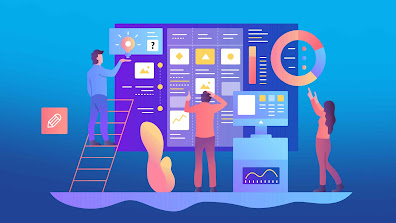How NLP Tools Are Changing the Way We Analyze Text Data
In an age where data is often
referred to as the new oil, the ability to extract meaningful insights from
text data has become crucial for businesses, researchers, and organizations
alike. Natural Language Processing (NLP) tools are at the forefront of this
transformation, enabling us to analyze text data with unprecedented efficiency
and accuracy. This blog explores how NLP tools are
changing the landscape of text data analysis, unlocking new opportunities and
enhancing decision-making processes.
Understanding NLP and Its
Importance
Natural Language Processing (NLP)
is a branch of artificial intelligence that focuses on the interaction between
computers and humans through natural language. It involves the development of
algorithms and models that enable machines to understand, interpret, and
manipulate human language in a way that is valuable. With the explosion of
unstructured text data—from social media posts and customer reviews to research
papers and emails—NLP tools have become essential for processing and analyzing
this information effectively.
Key Changes Brought by NLP
Tools
1. Enhanced Data Processing
Speed
Traditional text analysis methods
often require significant manual effort and time to sift through large volumes
of data. NLP tools automate this process, enabling organizations to analyze
vast amounts of text data in real-time. For instance, sentiment analysis tools
can scan thousands of customer reviews in seconds, identifying trends and
insights that would take humans much longer to uncover.
2. Improved Accuracy and
Consistency
Human analysis is prone to biases
and errors, especially when dealing with large datasets. NLP tools leverage
machine learning algorithms that can learn from data, continuously improving
their accuracy over time. By using techniques such as tokenization, stemming,
and named entity recognition, NLP can provide more consistent and reliable
results, reducing the chances of misinterpretation or oversight.
3. Powerful Sentiment Analysis
Understanding customer sentiment
is crucial for businesses seeking to enhance their products and services. NLP
tools equipped with sentiment analysis capabilities can automatically gauge the
emotions expressed in text data. For example, companies can analyze social
media mentions and customer feedback to determine public sentiment toward a
brand or product. This information helps organizations make informed decisions
about marketing strategies and product improvements.
4. Automated Topic Modeling
NLP tools can automatically
identify and categorize topics within large sets of text data, a process known
as topic modeling. Techniques such as Latent Dirichlet Allocation (LDA) enable
analysts to uncover hidden themes in documents, helping organizations to
summarize content and understand trends. For instance, researchers can quickly
identify key topics in academic papers or industry reports, facilitating
literature reviews and enhancing research efficiency.
5. Enhanced Search and
Information Retrieval
NLP has transformed the way we
search for and retrieve information. Search engines and databases now use NLP
techniques to provide more relevant results based on user queries. Semantic
search, which understands the context and intent behind a search query, allows
users to find information more efficiently. This technology enhances user
experience, particularly in knowledge management systems and customer support
platforms.
6. Language Translation and
Localization
With businesses operating on a
global scale, the need for effective communication across languages has never
been greater. NLP tools facilitate real-time translation and localization of
content, enabling organizations to reach diverse audiences. Services like
Google Translate utilize NLP to analyze and convert text from one language to
another, breaking down language barriers and allowing for smoother
communication.
Conclusion
NLP tools are revolutionizing the
way we analyze text data, providing organizations with the ability to process
information quickly, accurately, and at scale. From sentiment analysis to topic
modeling and automated translation, these technologies empower businesses and
researchers to uncover valuable insights that were once buried in vast amounts
of unstructured text. As NLP continues to evolve, its impact on text data
analysis will only grow, enabling more informed decision-making and driving
innovation across industries. In this data-driven era, leveraging NLP tools is
not just an option—it’s a necessity for organizations aiming to stay
competitive and responsive to their stakeholders' needs.



Comments
Post a Comment